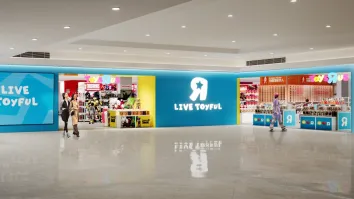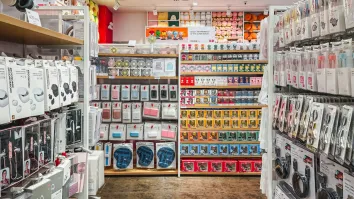Keep your romance alive to protect your business from extinction
Building relationships with consumers …
A study from the John M Olin School of Business at Washington University in the US estimates that 40% of today’s top 500 companies on the Standard & Poor’s 500 (S&P 500) will no longer exist in 10 years. The study was published a couple of years ago, which means we should expect that to happen by 2025. That estimation is in line with Richard Foster’s finding from Yale University that the average lifespan of a company listed in the S&P 500 has decreased from 67 years in the 1920s to 15 years today.
The main reason of extinction? Businesses will stop being relevant to their customers.
What about today?
According to Marketing at Work, the average business loses about 10%-25% of its customer base per year, mostly because repeat business is diminished and the company is spending time and money attracting new businesses. But is that the right strategy, considering loyal customers are worth up to 10 times as much as their first purchase and it is six to seven times more expensive to acquire a new customer than it is to keep a current one? And is the strategy sustainable in the long run to avoid extinction?
Why aren’t brands and retailers pursuing the opposite strategy instead: to retain current customers and keep them happy?
Perhaps, it’s because making customers to fall in love is easier than keeping the romance alive.
So, what does it take for brands to keep the romance alive?
The pursuit of loyalty
I recently travelled with Singapore Airlines with my family and requested a special dietary meal for my daughter. I called the customer service hotline while we were in Japan and after a few minutes conversing with an officer, I was given the assurance that they would try their best to adhere to my request. I took it as a done deal.
Ten minutes after boarding the plane, I was approached by the leading stewardess about the special meal and I learnt it was not what I requested. She did not give up there. She came back and showed me all the available meal options they had for that flight and told me she could serve multiple meals just for my daughter. When the meal was finally served, it was pretty close to my original request; she rescued the experience for us and I was won over.
A few days later, I called their contact centre again to appeal for a refund for a pair of air tickets purchased under a non-refundable term. My daughter had become quite ill and could not make the trip. I supplied a medical letter and asked to see what they could do. A few hours
later, she called me back and told me that the management has granted the refund request.
So, for me, what it takes for a brand to make me stay in love with them is commitment. It is about having the assurance that they care about me and about keeping our relationship alive. Singapore Airlines clearly demonstrated that to me and let’s just say starting an affair with another airline will not cross my mind.
The modern dating games
Just as navigating through relationships in the modern age is tough, the same is true for brands to maintain strong relationships with their consumers. Consumers now hold the power in the relationship, thanks to the digital economy. As a result, consumers have much higher expectations of what they want brands to deliver, and they won’t flinch about breaking up with a brand that does not meet their standards.
In March this year, SAP Hybris commissioned a survey of more than 7,000 consumers across seven countries in the Asia-Pacific region to better understand what consumers look for when engaging with brands.
What we found was a hard truth of the new reality; 89% of those surveyed expected a brand to respond to them within 24 hours (with China and India being the highest at 94%), 78% would leave a brand if it used their data without their knowledge, followed by a good 73% if they experienced an unresponsive customer service.
We also found that on average, 82% of those surveyed were willing to share some information (such as shopping experiences, email address and mobile number) with brands, with an exception of those in Japan (at 52%). But in return, these consumers expect brands to protect their interests when using their personal data. Trust is still an important currency after all in a relationship.
Love me tender, love me true
According to global market intelligence firm IDC, one third of the top 20 in every industry will be disrupted by digitally-transformed competitors by 2018. That means retaining customers will be even more challenging than it is today and there is a greater need for brands and retailers to invest more in their relationships with their customers.
Here are some tips.
Just like in a love relationship, we all want to feel special and loved. A bunch of flowers or a surprise are signs that the magic is still there. Consumers are no different. If they invest their time and money with a brand or retailer, they hope for gestures that reward and gratify.
On this topic, the study also unveiled receiving surprises topped the list (58% across the Asia-Pacific region) on how consumers want brands to show their love.
Incentivising customers, in the forms of gifts, discounts and a satisfying customer service experience, is now a must-do for businesses to keep the romance alive with their customers.



















 Advertise
Advertise








